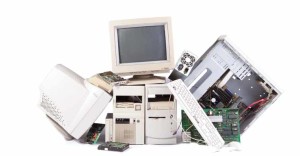When it is time to upgrade your devices?
 Technology is evolving at the same fast speeds that run our devices. Unfortunately, this can leave a lot of people in the dust with technology that just isn’t up to snuff anymore. This leaves one big question: how do you know when it’s time to invest in something new?
Technology is evolving at the same fast speeds that run our devices. Unfortunately, this can leave a lot of people in the dust with technology that just isn’t up to snuff anymore. This leaves one big question: how do you know when it’s time to invest in something new?
Of course, deciding when to ditch your old device and look for something new depends significantly upon your use of the device. For someone who uses a cellphone only to talk and maybe text, it may be a very long time before they ever have to worry about switching from their old flip-phone to a newer device. People concerned about desktop PCs also have a little less to worry about, as they can often switch out single elements of their computer — new monitor, new hard drive, new graphics processor — rather than replacing the whole thing.
For the sake of simplicity in this complex matter, we’ll focus mostly on mobile devices, such as smartphones, tablets, and laptops. There is a great deal of overlap in the applications of these devices, and a similar degree of inability to upgrade single components of these devices — though laptops have significantly more options. So, without further ado, here are some of the key ways to know when you should consider ditching your old hardware for something a little more up-to-date.
1. The Hardware Is Dying
One of the easiest things to notice is when your device is actually just dying. Even if you take good care of your device, eventually it may wear itself down. Not many things are made to last forever these days, and with tech continually evolving and creating newer versions of the products we use daily, there can be almost no expectation for a device to survive for years and years.
There are a many signs to indicate your device in on its last legs. If your screen has dead pixels (black spots where you should see bright, vivd color), that’s a good sign that your device is on its way out. Of course, for newer devices, this may just be your sign that its time to use that warranty. A few dead pixels may not be the end of the world, but if more and more of your screen is dying, that’s a sure sign you should begin the hunt for something new. Similarly, if you’ve dropped your device and shattered the screen, it may still work for a while yet, but a second or a third drop could be the end of it and could put you in a pinch for time finding a replacement. Also check with local device repair companies, a screen replacement may be more economical than replacing the entire device if no internal components are damaged. 
Batteries are another problem area as time passes. We all remember the days when our devices were new and it felt like the battery would last forever, but those days don’t last long. When your device needs to be plugged in every hour, it may be time to replace the battery. Most batteries are still available for most devices, just have a pro do it, these devices never go back together as easy as they come apart!
2. No More Support
This problem has nothing to do with the device at all. It’s not the devices fault. You could have purchased an original iPhone in 2007 and left it in its box until today. Though the device may be in mint condition, the services surrounding it have been moving on into the future. Companies have limited resources and have to decide how to invest those resources into supporting devices. Eventually, old devices have to stop receiving software updates, which can leave them vulnerable or incompatible. If your old smartphone can’t get the latest operating system, it may also be unable to get the latest apps.
Unfortunately, it may be able to get the latest software attacks, which have had extra time to find the holes in security that haven’t been getting as much attention from the system’s developers. Some services won’t even let you continue running the old versions of apps if you’re otherwise unable to upgrade to the latest version. For instance, Facebook’s mobile app has a period in which it will allow users to continue logging in from older version of the app, but eventually it requires updating to the latest version, or else users won’t be able to log in anymore. So, even if you’re content running on your old device with out-of-date services, that could still be pulled out from under your feet. In the event that you see support for your device waning, it may be time to start looking into what your options are for making the move to a newer device.
3. Too Weak for Modern Applications
Modern devices are made to meet the demands of modern applications. Higher-end devices can easily handle the most demanding programs and will be able to keep chugging along a bit further into the future, whereas lower-end devices may just meet current demands for most run-of-the-mill applications. This is where older devices really fall short, especially if they weren’t at the high end when they were launched.
Again, even a device that is well maintained will eventually fall behind as other technologies race away to the future. As applications are updated and newer applications come out, they have expectations for hardware and require certain amounts of devices resources. A web browser ten years ago might have required only a few kilobytes of memory and a small bit of processing power to run smoothly, but modern web browser — not to mention modern websites — require a much heftier load of those resources. Doing a little multitasking could easily take a few hundred megabytes of memory, which is more than a lot of computers five years ago even had. So, it is very possible that an old computer could be too weak for something as simple as a little web browsing. Remember, the computer still has the same features and specs if did when you took it out of the box, but look what you can do on the web now compared to just a few years ago, and you will see why that older machine can’t keep up!
The same goes for smartphones and tablets, which rely on a lot of the same fundamental resources to support computing activities. Of course, for laptops, there is at least a limited amount of upgrading components that you can do — even then there is a limit to compatibility. When your device has to chug just to do menial tasks, it may be time to look at what else is on the market. The longer you wait, the further technology is going to progress and leave your device behind.
4. You Don’t Want to Be Left Behind
One of the simplest reasons to update your devices is to ensure you can keep up with how technologies actually work. One device may do everything you need it to, as far as you’re concerned, and using it for a long time will certainly help you understand how it works, but sticking with it is an easy way to lose touch with technology.
Some of the key changes in technology are simple: processors get faster, batteries last longer, memory expands. However, other changes are more substantial and get harder to learn the longer you wait. If you upgrade devices every few years, you’ll probably be able to quickly adjust to the difference between each devices, as they’ve evolved in simple steps. But, if you wait a few device generations to upgrade, you may find the new technologies so unfamiliar that it’s very hard to adapt.
Today, interactive smart technology is appearing all over the place. Malls and shops are finding ways to cater to customers using the latest smartphones. Cars are incorporating smart devices. On top of that, innovative technologies, like Google’s Glass, are doing things dramatically different from their predecessors.
As technology follows these branches further and further out, the world around us will become increasingly unfamiliar to those who aren’t keeping up with technology. So, for those who don’t want to be left behind, it wouldn’t be a bad idea to periodically update your technology, even if the problems I’ve mentioned haven’t cropped up for you yet.
Though many of us many not find the latest and greatest gadgets to be a necessary centerpiece in our life, those of us that do rely and spend significant amounts of time on these devices should keep in mind the signs that it’s time to look into upgrading. These signs do not mean an upgrade is immediately needed, but are hints that it may be wise to explore what the market is offering. As today’s electronics can be quite expensive, it’s a good idea to scan the offerings early and make sure you’re finding the right device at a price that is right for you.
As always, if you have any tech-related questions, please contact me!

Leave a Reply
Want to join the discussion?Feel free to contribute!